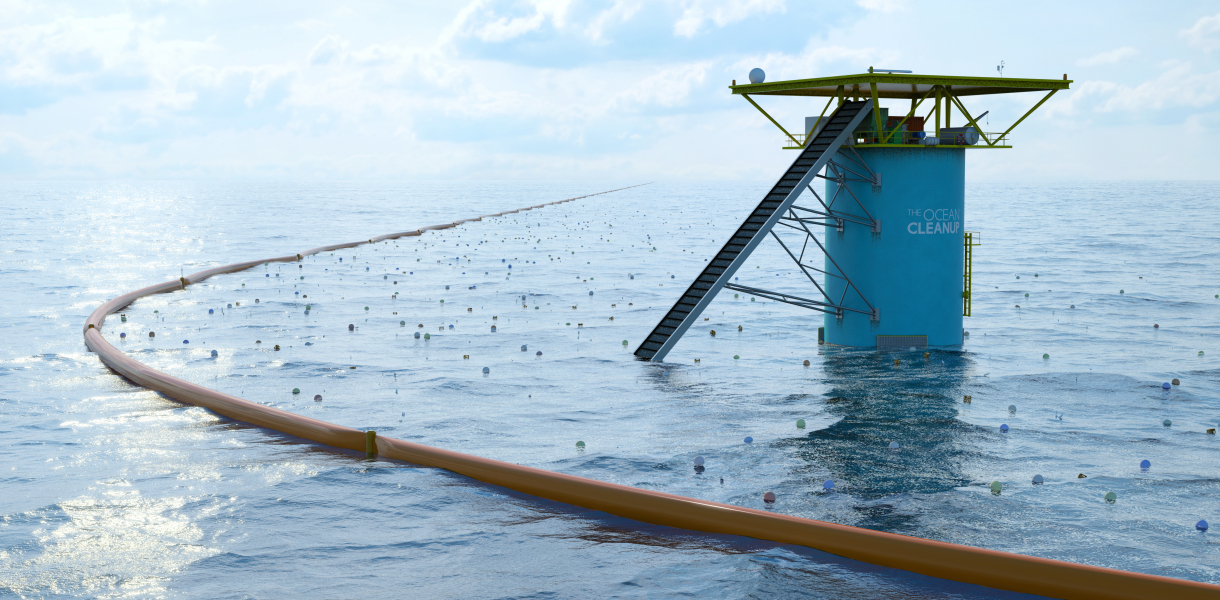The Ocean Cleanup Array will be the first system to sustainably clean up plastic pollution from the world's oceans using the natural rotating currents to its' advantage. Designed for large-magnitude deployment, covering millions of square kilometres, the solution is a collection of huge floating barriers designed to be placed in the centre of the circular currents – called gyres – and passively collect the plastic.
The rows of barriers to be placed on the ocean's surface will essentially work like a giant funnel; while the current flows freely underneath, the booms will catch the floating lighter-than-water debris. Once the plastic is concentrated, assisted platforms attached to the barriers will then efficiently extract the plastic from the sea. The waste can then be brought on to land via vessel, sorted and recycled into new materials or oil via pyrolysis.
The stationary system is entirely safe for marine life and is designed to be almost entirely self-sufficient, predominantly running on energy harnessed from the sun and waves. The Ocean Cleanup's research indicates that using a single 100 km floating barrier, deployed for ten years, will remove 42 per cent of the great pacific garbage patch. They estimate this to be 70,320,000 kilograms, which will cost US $5.10 per kilogram.
Facts about the Global Challenge
- Approximately eight million tons of plastic is thrown into the oceans every year. Gyres – as the oceans' largest rotating currents – concentrate most of this plastic into five large areas around the world, which some call 'islands of garbage'.
- Plastic in the oceans has become one of the world's biggest pollution problems, killing up to 100,000 birds, fish and other marine life every year.
- The problem currently costs the world about US $13 billion every year in plastic removal. According to The Ocean Cleanup Array team, all the methods proposed or currently in practice are not only costly but are also harmful to the environment. "Using vessels and nets to collect the plastic from one garbage patch would take about 79,000 years and tens of billions of dollars," the team reports. "Such an operation would cause significant harm to sea life and generate huge amounts of CO2 and other emissions."
INDEX: AWARD 2015 WINNER - THE OCEAN CLEANUP ARRAY (HD) from The Index Project on Vimeo.




